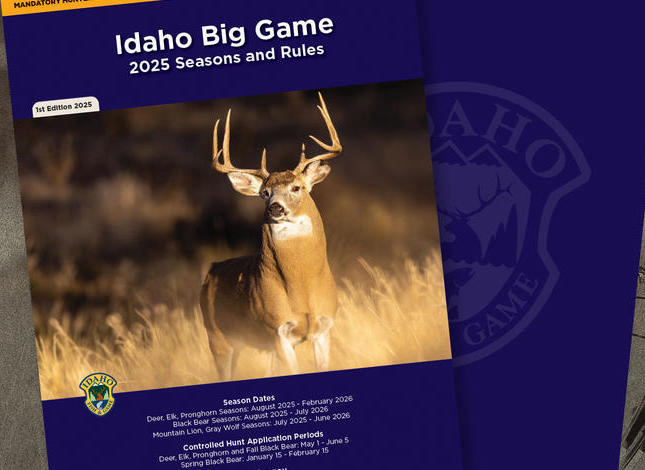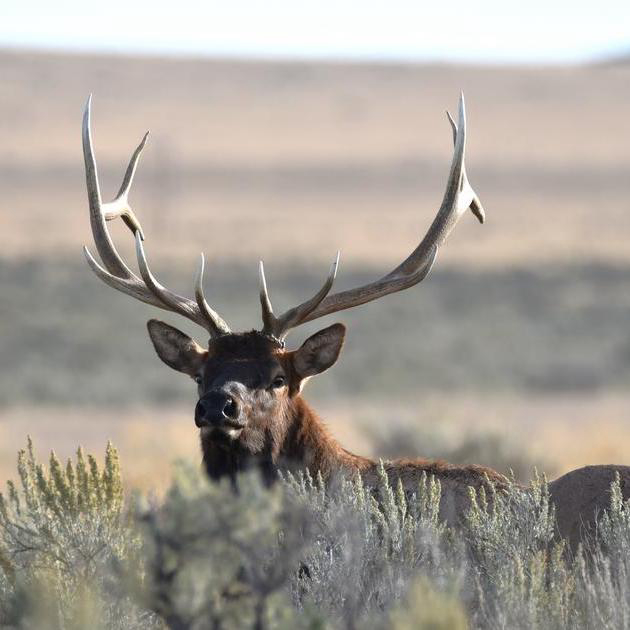

|
When hunters peek online or thumb through their copy of the 2025 Big Game Seasons and Rules Brochure for the first time, they should take note of several changes to seasons in the Southwest Region – and understand how those changes came about.
This season-setting process began with biologists and managers assessing wildlife populations and the capacity to sustain harvest, as well as where those populations stand compared to the guidelines established in Fish and Game’s species management plans. The process ended with the Fish and Game Commission considering Department staff’s recommendations and making decisions that are reflected in the 2025 big game brochure.
The most important part of that process is what happened in between – the presentation of the preliminary proposals to the public, and the opportunity for people to provide feedback.?
Prior to the March Commission meeting, regional wildlife staff across the state hosted public meetings to provide interested sportsmen and women the opportunity to meet face-to-face and discuss proposals. That included a total of five in the Southwest Region, including meetings in Nampa, Mountain Home, Weiser, Council and McCall.
Recognizing not everyone has the time to attend an evening meeting, Fish and Game staff also prepared videos that summarized proposals. The meetings and presentations included descriptions of each proposed change, the rationale behind it, and where the ideas came from. In total, 1,831 people reviewed and provided feedback about the initial season proposals for the Southwest Region.
Before presenting final recommendations to the Commission, regional wildlife staff evaluated all that feedback and identified opportunities to adjust proposals within biological limits and management plan objectives.
“In many cases, the adjustments we make to initial season proposals in response to public input are an effort to thread a needle,” said Regan Berkley, Southwest Region Wildlife Manager in McCall. “Our goal is to be as responsive as we can to public input, while still making recommendations to the Commission that move us toward biological objectives for a given population. In several cases this year, we found the space to do that.”
Here's where public input resulted in adjustments for the Southwest Region
Weiser River Elk: Fish and game staff completed an aerial survey of the Weiser River Zone in late January. That survey confirmed that Weiser elk are well above objectives and trending upward from the previous survey. The original proposal that was scoped with the public included shifting “Private Land Only” dates back by two weeks on the Weiser River Zone B Tag and removing the quota from the B Tag. This proposal aimed to provide additional opportunity to hunters and reduce the elk population towards the objective range identified in the Elk Management Plan.
Fish and Game staff received a total of 175 responses to this proposal, which included 113 written comments. Roughly 40% of people who responded supported the original proposal, while 60% did not.
A couple of common themes came out of the comments provided by folks who didn’t support the proposal – namely, they had concerns about creating additional congestion and overlap between the archery and rifle seasons.
Among people who supported the proposal, commenters generally appreciated the increased opportunity and proposed bringing back some cow hunting on the A Tag.
The final season proposal that Southwest Region staff sent to the Commission for consideration – and that ultimately ended up in the 2025 seasons and rules brochure – was aimed at addressing these common themes, while still moving the population toward objectives. The modified proposal kept the current “private land only” dates on the B Tag, shortened the end date on the public land portion of the B Tag, and added any weapon A Tag antlerless opportunity in Unit 32 only.
“The modifications to the proposal helped alleviate archers’ concerns about overlap between rifle and archery hunting, and helped reduce hunter congestion by shifting some hunters to the A Tag, while maintaining harvest during November,” said Berkley. “Adding late November ‘private land only’ hunts should help push elk off private – or at least help avoid elk being pushed onto private.”
Unit 39 mule deer: There were several proposals related to mule deer in Unit 39, all of which were geared at improving herd health.
For years, there have been indications that the mule deer in Unit 39 have been nearing carrying capacity. Fawn weights – which biologists collect when they capture and GPS collar mule deer fawns for survival monitoring – were below average again this year suggesting that deer are competing for limited resources.??
In essence, the initial proposals looked to increase herd health by increasing antlerless harvest, resulting in fewer does competing for forage, which would increase fawn weights, and ultimately, fawn survival.
Two of the initial proposals were to reduce tag numbers in the Unit 39/43 either-sex controlled hunt and create a new, extra antlerless controlled hunt in Unit 39. A majority of the responses to these two proposals were not supportive, and at the same time, biologists were surveying the deer population in Unit 39. That population survey showed decreasing mule deer numbers since the last survey in 2018. Based on the data from the abundance survey data, biologists felt comfortable removing these two proposals altogether.
“We still believe we have an issue with herd health in Unit 39, and the signs point to the herd nearing – or possibly recently exceeding – carrying capacity,” said Ryan Walrath, Regional Wildlife Manager in Nampa. “But given the population decrease observed in this year’s survey, we believe we can manage antlerless harvest adequately under the current season model – including general season and controlled hunt youth hunting opportunity, and either-sex controlled hunts – for now.”
Weiser-area black bear
Fish and Game staff scoped several proposals with the public for units 22, 31, 32 and 32A.
For units 22, 31, and 32A, a common thread in the initial proposals was to redefine the general hunt boundary from “on or within one mile of private land” to “outside the National Forest System Boundary.” The reasoning behind this proposed change was mostly related to enforcement challenges under the current boundaries.
In units 22, 31, and 32, initial proposals also included adding hound hunting opportunity during October 1 –9. Season in Unit 32 were proposed to shift from unlimited controlled hunts to general hunts.
In Unit 32A, additional proposals revolved around the need to reduce black bear harvest, including eliminating spring and fall baiting and spring hound hunting.
“Harvest had increased more dramatically than anticipated in Unit 32A following relatively recent changes in allowable methods of take for the general season,” said Berkley. “That – coupled with the Lava Fire, which impacted about a quarter of bear habitat in the unit last summer – led us to believe that both the bear population and controlled hunt quality could be negatively affected if we didn’t make a change.”
The public generally supported proposed changes to black bear hunts in Unit 32. However, the public generally did not support proposed changes in 32A, nor in units 22 and 31. This was mostly because they felt proposed changes to general hunt boundaries would reduce hunting opportunity and bear harvest, and they opposed any reduction in hound hunting opportunity.
Ultimately, the scoping process resulted in Fish and Game staff modifying their black bear season proposals in units 22, 31, and 32A by not implementing the proposed change to the general hunt area boundary in those units. Additionally, hound hunting dates in Unit 32 were modified to include the last 2 weeks of September (in addition to the first 9 days of October included in the original proposal).